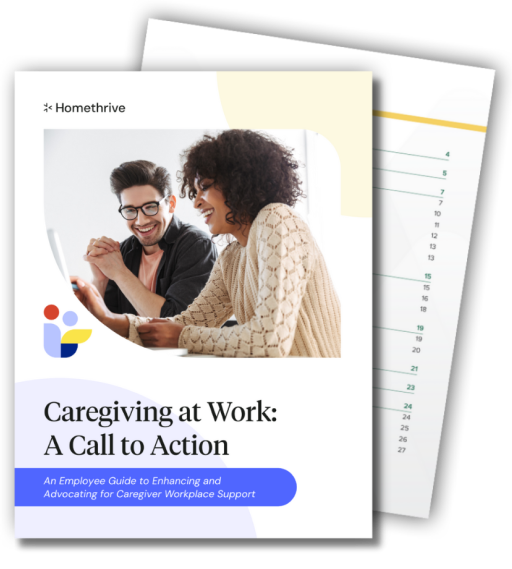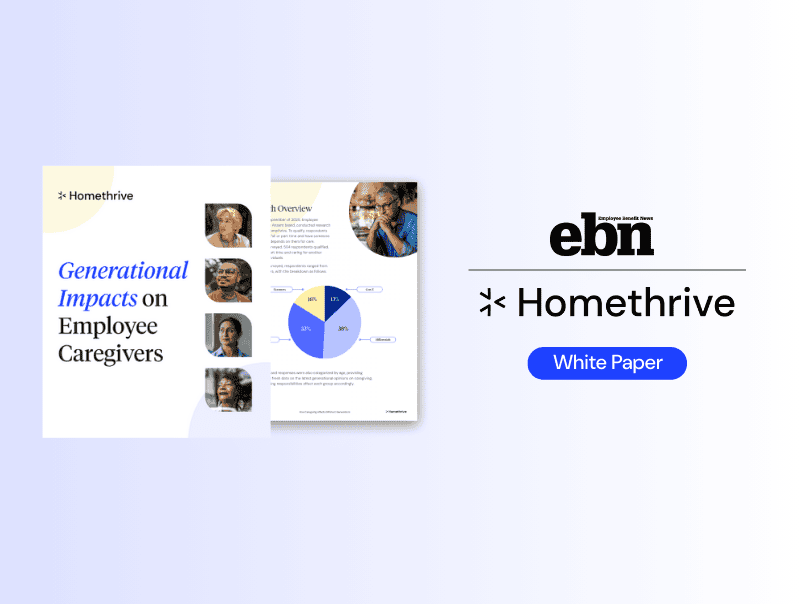August marks National Wellness Month, a time dedicated to prioritizing physical, emotional, and mental well-being. For HR leaders and business executives, this is more than just a symbolic occasion—it’s an opportunity to evaluate and enhance employee wellness initiatives, create a healthier workplace culture, and reduce the risks of burnout.
Employee wellness has become a central part of organizational success, particularly in a post-pandemic workforce where stress, remote work challenges, and caregiving pressures are at an all-time high. By leveraging National Wellness Month, employers can take proactive steps to improve team morale, boost productivity, and enhance retention, while also demonstrating a tangible commitment to their people.
What Is National Wellness Month?
National Wellness Month encourages individuals and organizations to focus intentionally on health, self-care, and overall well-being. It’s an annual reminder to step back and evaluate how we manage stress, balance responsibilities, and support mental and physical health both at home and at work.
For businesses, National Wellness Month is an ideal time to reassess wellness programs, policies, and support systems. Employee well-being is not just about fitness or occasional perks—it encompasses mental health, emotional support, social connection, and stress management. Studies show that workplaces that prioritize holistic wellness see higher productivity and lower turnover rates.
Key goals of National Wellness Month include:
- Raising awareness about the importance of wellness at work and home.
- Encouraging employers to invest in sustainable wellness programs.
- Empowering employees to build healthy routines and access support resources.
Wellness isn’t a one-month initiative—it’s a cultural shift that should extend throughout the year.
When Is National Wellness Month?
National Wellness Month is observed every August, offering a perfect midpoint in the year to reflect, refresh, and reset wellness priorities. By August, many teams are often dealing with summer scheduling challenges and mid-year performance reviews and project deadlines.
This timing allows employers to pause and recalibrate workplace wellness initiatives before the year-end push. Launching programs or campaigns in August also ensures momentum heading into the busy fall season.
For HR teams, National Wellness Month provides a natural platform to reintroduce wellness programs, survey employees about their needs, and align wellness goals with larger organizational objectives.
Scenarios That May Impact Workplace Wellness
Employee wellness is not one-dimensional—a range of personal, professional, and societal factors influences it. Understanding these scenarios helps employers respond effectively and provide meaningful support. While National Wellness Month highlights the importance of overall health, it is especially relevant for workplaces to consider the various situations that can affect their team’s well-being.
Caregiving responsibilities
Many employees are balancing work with caring for children, aging parents, or family members with health conditions. Caregiver stress is a major contributor to workplace burnout. According to the Harvard Business School, 73% of U.S. adults have some form of caregiving responsibilities. These responsibilities can include caring for children, parents, spouses, other relatives, or friends with disabilities or chronic illnesses.
Caregivers often experience higher emotional exhaustion and may need flexible schedules, remote work options, or additional leave to maintain their well-being. Employers who acknowledge these responsibilities and offer accommodations—such as caregiver benefits, flexible work hours, or access to employee resource groups (ERGs)—can significantly reduce turnover and improve morale.
Grief and loss
Experiencing the death of a loved one, a miscarriage, or other forms of personal loss can profoundly affect an employee’s mental health and productivity. Grief can manifest as fatigue, difficulty concentrating, or emotional withdrawal, which may last well beyond any allotted bereavement leave.
Workplaces that adopt compassionate policies—such as extended leave options, loss support, and manager training on responding to grief—create an environment where employees feel valued and understood. According to the American Psychological Association, empathy from employers can reduce absenteeism and help employees re-engage more quickly.
Life transitions
Major life transitions—such as moving, marriage, divorce, or welcoming a new child—can also impact workplace wellness. Even positive events can create stress when employees juggle new responsibilities alongside work. Supporting team members during these transitions through flexible schedules, temporary workload adjustments, backup care, and clear communication can make a significant difference in morale and engagement.
External crises and societal stress
External events, such as economic uncertainty, natural disasters, or public health crises, can have a significant impact on employees, even if they are not directly affected. Research from Gallup shows that employees who feel supported during external stressors are 70% more likely to stay engaged and productive.
Providing access to mental health resources, maintaining transparent communication during crises, and acknowledging the emotional strain of external events helps employees feel secure and supported.
Burnout and Overwork
Burnout remains one of the most prevalent wellness challenges. It occurs when individuals fail to effectively manage chronic workplace stress, leading to exhaustion, cynicism, and reduced productivity. The World Health Organization now officially recognizes burnout as an occupational phenomenon.
Factors contributing to burnout include unrealistic workloads, lack of support from leadership, and poor work-life balance. For teams, burnout can create a ripple effect—reduced morale, lower collaboration, and increased turnover. Addressing this requires proactive steps, including promoting realistic performance expectations, encouraging employees to use vacation time, and implementing mental health check-ins throughout the year.
While many organizations focus on engagement and performance, failing to address burnout can lead to decreased productivity, rising absenteeism, and costly turnover. According to Gallup, burned-out employees are 63% more likely to take a sick day and 2.6 times more likely to actively seek another job.
Key Drivers of Workplace Burnout
Burnout rarely occurs in isolation—it’s usually the result of overlapping workplace pressures. Some of the most common drivers include:
Chronic overwork and unrealistic expectations
Employees who regularly face heavy workloads or impossible deadlines are at the highest risk of burnout. When workers feel like they are constantly “catching up,” stress accumulates without room for recovery.
Lack of autonomy or control
When employees feel they have little influence over their schedules, tasks, or decision-making, a sense of helplessness can develop. Micromanagement or unclear expectations exacerbate this effect.
Insufficient support from leadership
A lack of acknowledgment or assistance from managers can make employees feel undervalued. Without guidance, coaching, or resources, small problems escalate into chronic stress.
Blurred work-life boundaries
With the rise of hybrid and remote work, many employees struggle to separate work hours from personal time. A “24/7 availability” culture accelerates burnout by reducing rest and recovery periods.
Inadequate recognition and rewards
Hard work that goes unnoticed can quickly lead to disengagement. Recognition—whether public praise, performance bonuses, or even small personal acknowledgments—plays a critical role in sustaining morale.
Identifying Burnout Early
Employers can mitigate the impact of burnout by recognizing its warning signs early. Common indicators include:
- Increased absenteeism or frequent sick days
- Declining productivity or missed deadlines
- Irritability, withdrawal, or visible frustration
- Reduced engagement in team meetings or collaboration
- Expressions of feeling “stuck,” “drained,” or “unmotivated”
Managers trained to notice these patterns can intervene before employees reach a breaking point.
Strategies to Reduce and Prevent Burnout
Proactively addressing burnout requires a combination of structural changes and cultural support. Effective strategies include:
Implementing reasonable workloads
Regularly evaluate task assignments and redistribute work when employees are overloaded. Encourage teams to focus on high-priority tasks and minimize unnecessary “busywork.”
Encouraging breaks and PTO
Promote the use of lunch breaks, mental health days, and vacation time. Companies that normalize taking time off see higher productivity and retention rates.
Offering flexibility and autonomy
Flexible work arrangements—such as hybrid schedules, compressed workweeks, or adjustable hours—help employees balance personal and professional obligations. Even small degrees of control can significantly reduce stress.
Investing in wellness programs
Providing resources like mindfulness sessions, counseling services, or stress management workshops can give employees practical tools to manage their well-being.
Recognizing and rewarding contributions
Frequent and authentic recognition fosters a sense of accomplishment and belonging. Employee recognition programs, peer-to-peer shout-outs, and manager appreciation moments all reinforce positive engagement.
Leadership modeling healthy behavior
Leaders who demonstrate boundaries—like logging off after work hours or taking a vacation—set the tone for the entire organization. Employees follow the example they see.
The Business Impact of Managing Burnout
Addressing burnout is not just a moral responsibility—it is a strategic business decision. Organizations that prioritize employee well-being experience measurable benefits in engagement, loyalty, and productivity. By actively recognizing and addressing burnout, employers protect their team’s mental health and strengthen long-term business resilience.
National Wellness Month serves as a timely reminder to review policies, workloads, and cultural norms, ensuring that wellness is built into the foundation of your organization rather than treated as a reactive measure.
Setting up for success
Preventing burnout starts with proactive systems and policies rather than waiting for crises to occur. HR leaders and managers can foster a supportive environment by focusing on four core strategies:
Conducting wellness assessments
Begin with anonymous surveys to gauge employee stress levels, workload challenges, and interest in wellness programs. Data-driven insights make it easier to tailor initiatives to actual employee needs.
Creating flexible work policies
Offering remote options, hybrid schedules, or flexible hours allows employees to balance personal and professional responsibilities more effectively. Flexibility reduces daily stress and can improve both productivity and retention.
Providing accessible resources
Make mental health and wellness resources easy to access. Counseling hotlines, ERGs, and wellness benefits that integrate with and bolster Employee Assistance Programs (EAPs) provide employees with practical support when they need it most.
Encouraging PTO and mental health days
Normalize taking time off for recovery. When leadership actively encourages the use of vacation and personal days, employees are less likely to experience prolonged stress or burnout.
When employees feel supported in these ways, they are not only more engaged and productive but also more likely to remain loyal to the organization.
How Employers Should Approach Wellness
National Wellness Month is an opportunity for employers to embed wellness into the heart of company culture. A successful wellness strategy requires consistent, integrated efforts rather than one-time events. Consider the following approaches:
- Listen first – Collect employee feedback through surveys or focus groups before launching programs to ensure initiatives are relevant and well-received.
- Lead by example – Leadership should model healthy behavior, such as taking breaks, setting boundaries, and prioritizing mental health.
- Integrate wellness into policies – Build wellness into core operations with mental health days, EAPs, and inclusive benefits packages.
- Evaluate continuously – Track participation rates, gather feedback, and refine programs based on employee outcomes and engagement levels.
When wellness is a long-term commitment rather than a temporary initiative, organizations see reduced turnover, stronger productivity, and improved employer branding.
Strategies to Increase Morale
Supporting morale requires a sustainable approach that addresses both team dynamics and individual well-being. Focusing on multiple levels of engagement ensures that employees feel valued, empowered, and connected to the organization.
Team-level strategies
- Wellness workshops – Offer interactive sessions on mindfulness, stress management, nutrition, or financial wellness.
- Group physical activities – Introduce walking meetings, on-site yoga, or team step challenges to encourage movement and camaraderie.
- Recognition programs – Celebrate employee contributions frequently, whether through peer-to-peer shout-outs, awards, or monthly appreciation initiatives.
Individual-level strategies
- One-on-one check-ins – Regular discussions between managers and employees help identify stressors and support needs early.
- Personalized wellness benefits – Offer stipends or resources for therapy apps, gym memberships, or other customized wellness options.
- Flexible career development – Encourage professional growth through mentorship or training opportunities that fit into employees’ schedules without adding stress.
By combining organizational support with individual empowerment, employers can create a resilient, engaged workforce that thrives throughout the year—not just during National Wellness Month.
National Wellness Month is more than a calendar event—it’s a call to action for employers to make workplace wellness a priority. By acknowledging the diverse challenges employees face, implementing proactive support systems, and promoting mental health year-round, HR leaders can foster a thriving, productive, and loyal workforce.
Investing in wellness is an investment in your people—and in the long-term success of your organization.
By partnering with Homethrive, you can help employees reclaim valuable time and energy to focus on their work, families, and personal well-being.
Show your team they don’t have to choose between their careers and caregiving responsibilities. Contact us today to explore how Homethrive can enhance your employees’ well-being and productivity.







